The lens also features weather-sealed construction, but apart from the seal around the mount, it’s unclear if there is extensive sealing elsewhere.
With no change to the optical construction, the new model performs practically identically to its predecessor. However, the new T* coatings have improved transmission slightly, which in turn lowers flare and improves contrast and perceived sharpness, as evidenced in the increase in the overall sharpness metric, but it’s slight and may be noticed only in the lab, rather than the field.
Specifications
- Canon EF mount
- Constant f/2 maximum aperture
- Lens made of special glass with anomalous partial dispersion
- T*® antireflective coating
- 9 elements arranged in 8 groups
- 0.44m minimum focus
- “Floating Elements” design
Zeiss Milvus 2/100M ZE highlights
- High-speed f/2 maximum aperture for a macro
- Floating elements design for high image quality at close range
- APD glass helps reduce chromatic aberration
- Durable metal design with manual focus helicoid — should last
Zeiss Milvus 2/100M ZE potential drawbacks
- Pricey lens at $1,900, with some competitors priced at half that
- 1:2 maximum magnification only, compared to 1:1 for a true macro
- Relatively heavy for a 100mm lens
Overall image quality
In terms of image quality, the new Zeiss Milvus 2/100M ZE fits between the uncompromising Otus designs and the best from the other brands. While the price is beyond what the average buyer may be looking to spend on a macro, it’s capable of delivering very high-quality images.
Specific use cases: Although billed as a macro, it can achieve only 1:2 magnification unaided, and would require an extension tube to achieve higher magnifications found on modern AF rivals, such as those from Canon. The Canon models also adopt internal focusing and don’t have any extending barrels like this model — the length increases markedly, which can be a disadvantage in certain circumstances (for example, under load when using heavy square filters). However, the Zeiss has depth-of-field markings and it feels solid. As with a lot of 100mm macros, this lens can easily serve double duty for portraits, though the lack of AF here could be considered a disadvantage.
Carl Zeiss Milvus 2/100M ZE Canon vs. Canon EF 100mm f/2.8L Macro IS USM vs. Sigma 105mm F2.8 EX DG OS HSM Canon
Rivals to the Zeiss include the image-stabilized Canon EF 100mm F2.8L Macro IS USM, which at $969 is just over half the price of the Milvus. As an L-series lens, the Canon has very good image quality, though it’s not at the same level of the Zeiss. On the EOS 5DS R, the Canon has quite high levels of transverse chromatic aberration,* sometimes called lateral color, and can’t quite match the Zeiss for sharpness in the center at f/2.8 or at the edges and corners at f/4.0.
Although not an Art-series lens, the highly-regarded Sigma 105mm F2.8 EX DG OS HSM performs almost identically to the Canon in terms of sharpness, and costs a similar amount. Its greatest benefit over the Canon is the lower level of lateral color. Similarly, the Zeiss has low lateral color and low vignetting, which on the 5DS R practically disappears after closing closing down a stop. The same is true for the Sigma, while that’s not the case until f/5.6 on the Canon.
From f/5.6 on, all three models perform similarly across the frame in terms of sharpness. That makes the trio well-suited to their intended use, where sharpness at wider apertures isn’t a prerequisite for a macro but is rather useful for portraits. Of course, you could argue that both Canon’s and Sigma’s adoption of AF and stabilization make them more suited for portraiture than the Zeiss.
The Zeiss continues to lead in our other metrics as well. Distortion is effectively corrected on the Milvus and very low on the others; however, the Canon has the lowest transmission of the three, deviating by –0.5 EV against the full aperture value (with the Zeiss and Sigma deviating by the same –0.3EV).
Lower transmission is mostly due to reflection which is the cause of flare. In turn, that lowers contrast and reduces apparent sharpness, so it’s no wonder Zeiss upgraded their already highly-regarded T* (pronounced T-star) coatings for improved performance on higher-resolution bodies such as the Canon EOS 5DS R.
*We don’t measure longitudinal chromatic aberration in which the longer wavelengths (such as red and yellow) are focused behind the shorter wavelengths (blue and green), and this can be a serious issue with lenses like these.
Conclusion
Like its predecessor, the updated Zeiss Milvus 2/100M ZE is a highly-corrected model, but with no changes to the optical design, image quality is only slightly improved over the original. That’s to be expected. The change in the T* coating has reduced flare, which in turn improves contrast and perceived sharpness, but even then, it is only a slight improvement. Taken as whole, the Zeiss Milvus 2/100M ZE remains the fastest lens of its type whose image quality can’t bettered by rivals. While it is pricey, only you can decide if it the Zeiss has twice the utility of the Canon or Sigma models.
As always, we recommend judging the image quality with your own camera model using DxOMark’s combined lens and sensor test results.
Remember, too, that evaluating image quality is only one part of choosing a camera. Reviews that also consider handling, reliability, and other factors also play an essential role. Here is a different review of the new Zeiss Milvus 2/100M ZE version:
http://www.the-digital-picture.com/Reviews/Zeiss-Milvus-100mm-f-2M-Lens.aspx


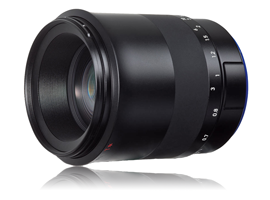


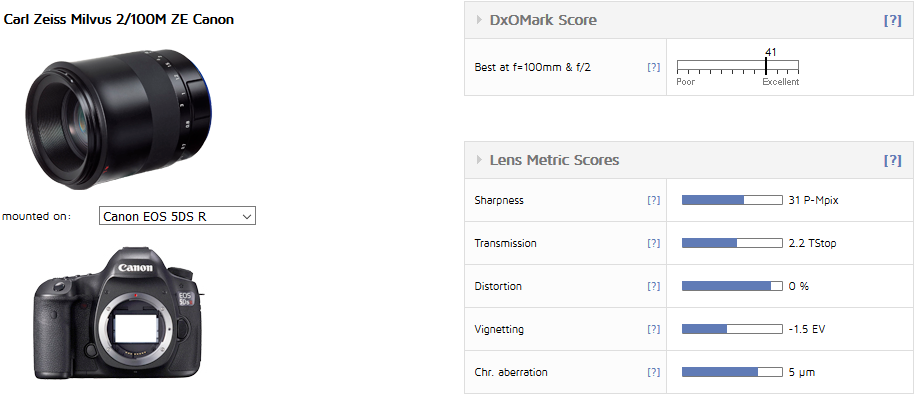
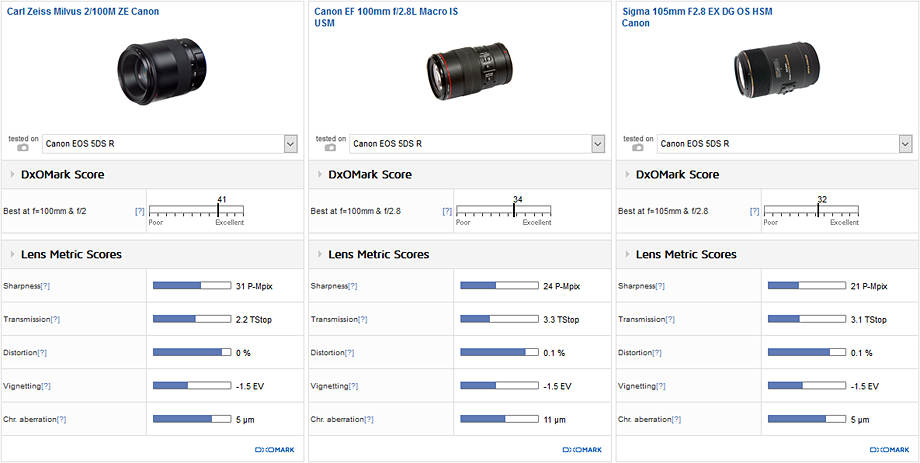
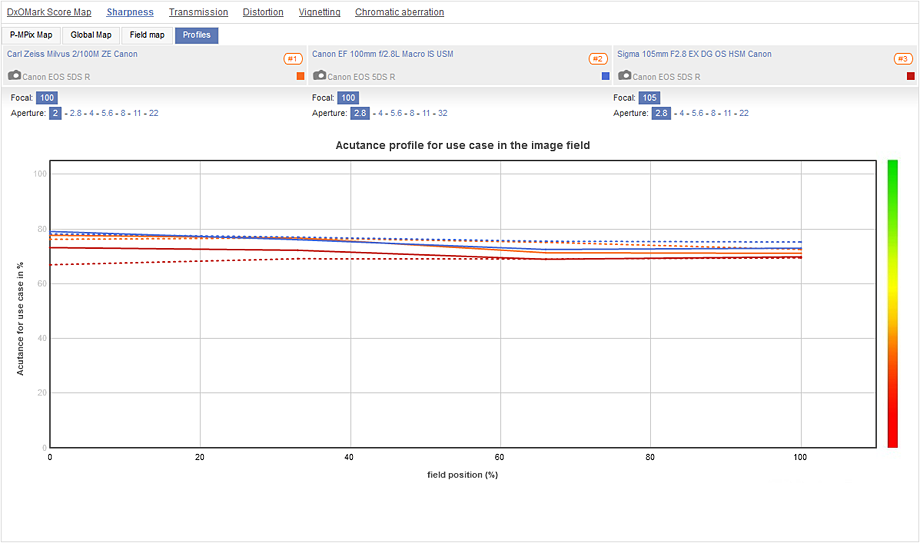
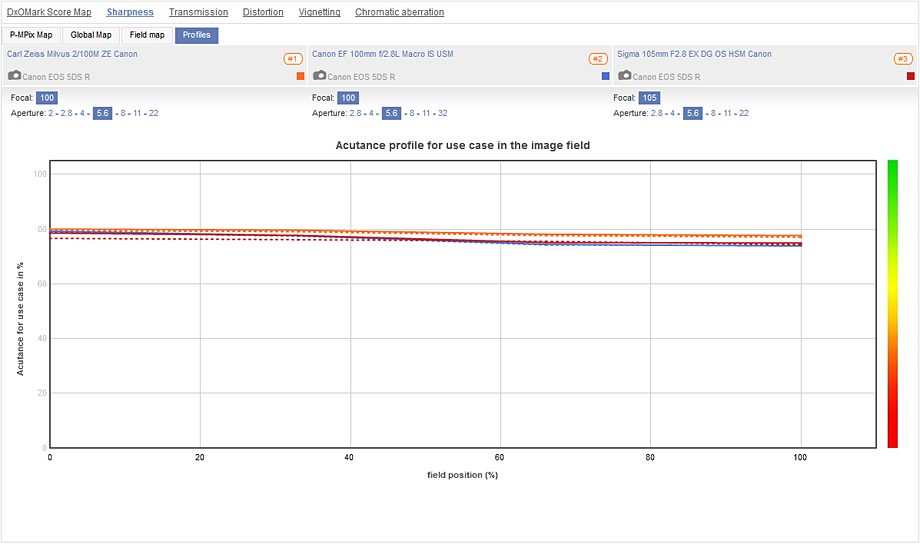
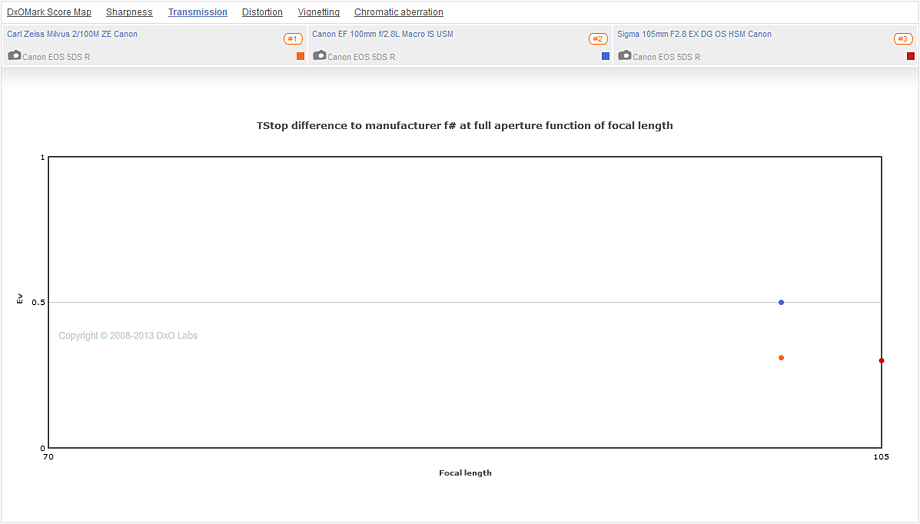
DXOMARK encourages its readers to share comments on the articles. To read or post comments, Disqus cookies are required. Change your Cookies Preferences and read more about our Comment Policy.